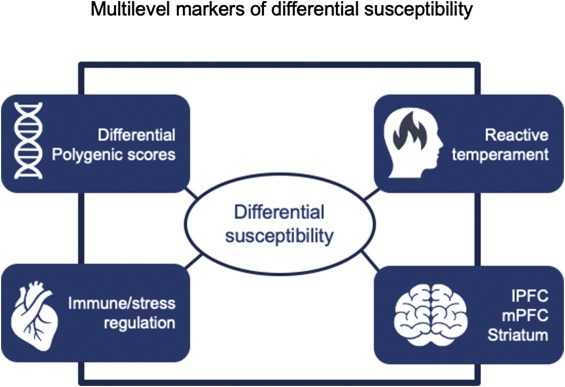News
Neural and behavioral signatures of social evaluation and adaptation in childhood and adolescence: The Leiden consortium on individual development (L-CID)
The Consortium on Individual Development aims to unravel why some children thrive and others don’t. The Leiden Consortium on Individual Development (L-CID) contributes to answering this question by studying how social evaluations trigger self-protective and other-oriented processes and how children may differ in their susceptibility to these social evaluations.
Self-control and prosociality
Two processes that are important for flexible social adaptation are self-control and prosociality. These behaviours might be motivated by social evaluations of self and others. For example, when a child experiences personal rejection it might trigger self-protective tendencies such as aggression, whereas observed rejection of another child might lead to prosocial behaviour toward the rejected child. In our review, we discuss the behavioural and neural correlates of these self- and other-oriented evaluations.
We show that there is overlap in the neural responses to social rejection and acceptance across two experimental tasks that are used in the L-CID study: the Social Network Aggression Task (used to measure personal social evaluation and associated self-control) and the Prosocial Cyberball Game (used to measure observed social evaluation and associated prosociality). Specifically, social rejection or exclusion was associated with overlap in activity in the superior medial prefrontal cortex and this neural activity was correlated across tasks.

Figure 1 Behavioural profiles based on combined profiles of self-protective responses (aggression following personal rejection) and prosocial behaviour (helping following observed rejection). Reprinted from Crone et al (2020).
Based on these commonalities in neural responses to negative social feedback and rejection of others, we propose a bi-dimensional taxonomy of social evaluation effects of self and others, to test whether there is also overlap in behaviour. These behavioural responses are organized across two axes: a dimension of self-protective aggression and a dimension of prosociality. This bi-dimensional taxonomy might be used to test whether the combination of behaviours associated with social evaluation effects is a better predictor for developmental outcomes than single task measures.
Differential susceptibility
The second aim of L-CID focuses on the question which children are most sensitive to social experiences and when they might be most sensitive to these experiences. Since L-CID is a longitudinal accelarated cohort-sequential twin study, it allows for testing these questions.
Results so far already showed that there is some evidence for genetic and shared environmental influences on neural signals during evaluations of self and others. Futhermore, to test for differential susceptibility to social experiences, the L-CID study incorporated a randomized control parenting intervention, the VIPP-SD, that focuses on improving sensitive interactions between parents and children and thereby enriching the social environment of children. Based on prior neural findings, we hypothesize that the effects of such social enrichment might be most pronounced in two sensitive developmental windows: early childhood and early adolescence.

Figure 2. Four potential differential susceptibility markers on different levels of functioning. Differential polygenic scores are potentially the foundation for the three (endo-)phenotypical markers, but across development epigenetic changes in expression of the genes involved might result from environmental influences filtered through immune and neural reactivity or temperamental characteristics. Reprinted from Crone et al (2020).
Besides genetic, social and environmental influences on social evaluations, we point to the medial prefrontal cortex (mPFC) as an important differential susceptibility marker that might explain differences in sensitivity to social evaluation. The mPFC is an important region for self- and other referential processing, self-control and social cognition and specifically sensitive to social evaluation in childhood and adolescence. We aim to test this model in the coming years, to give us more insight in why some children are more susceptible to enviromental influences than others.
More information
Eveline A. Crone, Michelle Achterberg, Simone Dobbelaar, Saskia Euser, Bianca van den Bulk, Mara van der Meulen, Lina van Drunen, Lara M. Wierenga, Marian J. Bakermans-Kranenburg, Marinus H. van IJzendoorn (2020) Neural and behavioral signatures of social evaluation and adaptation in childhood and adolescence: The Leiden consortium on individual development (L-CID) Developmental cognitive neuroscience DOI: 10.1016/j.dcn.2020.100805
This paper is part of a special issue in Developmental cognitive neuroscience about the Consortium on Individual Development. For an overview of all papers go to here.
